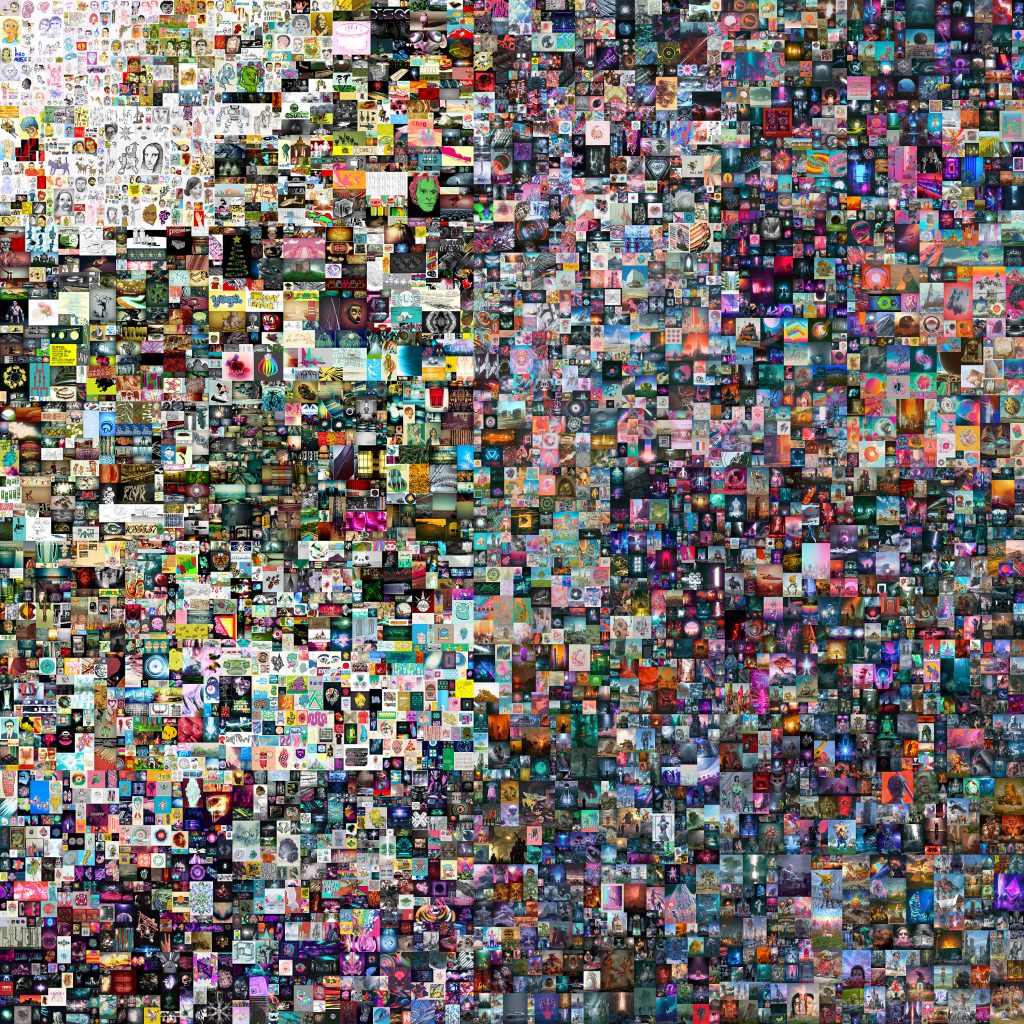
EVERYDAYS: THE FIRST 5000 DAYS
NFT sold for $69,346,250
In 2021, digital artist Beeple sold an NFT — Everydays: The First 5000 Days — for almost $70 million at Christie’s, marking a turning point in how digital art is perceived. Overnight, NFTs became a buzzword, promising to revolutionise art ownership by turning infinitely reproducible digital works into unique assets. But what does it really mean to “own” an NFT?
In May 2007, Beeple set out to create and post a new work of art every day, and he hasn’t missed a day since. His project, known as Everydays, consists of thousands of digital works created over 5,000 consecutive days. This relentless production has culminated in Everydays: The First 5000 Days, a collection that forms one of the most unique bodies of work in digital art history. The collection is stitched together with recurring themes, color schemes, and a visual style that evolves over time. The works are organised loosely in chronological order, with each piece revealing layers of abstraction, fantasy, grotesque imagery, and absurdity. Personal reflections and moments of political commentary also emerge, with recurring themes like society’s obsession with technology, wealth, and political turbulence.
Are NFTs Really Art?
While Beeple’s work offers a powerful commentary on the digital age, NFTs raise concerns about the commodification of art. NFTs may grant digital artists financial independence and bypass traditional art gatekeepers, but they also shift artistic value from aesthetics and cultural relevance to marketability. With platforms controlling much of the NFT space, it mirrors the exclusivity of the traditional art world. Will NFTs be remembered as a meaningful transformation in art history or simply a passing trend driven by market speculation?
How Do NFTs Work?
NFTs (Non-fungible tokens) use blockchain technology to assign ownership to digital artworks, creating artificial scarcity in a medium that, by nature, resists it. Theoretically, this solves the problem of digital reproducibility — just as a painting has one true owner, an NFT does too. Yet, in practice, the image or video associated with an NFT can still be copied, screenshotted, and shared endlessly. The value of an NFT, then, doesn’t come from the artwork itself, but from the blockchain record proving ownership — raising the question: is the art secondary to the asset?
Just Digital Gold Rush Tokens
Marshall McLuhan’s The Medium is the Message (1964) suggests that new technologies don’t just change how art is distributed, but how it is understood. NFTs may empower digital artists by providing financial independence and cutting out galleries as middlemen, but they also shift artistic value from aesthetics and cultural impact to marketability. The NFT space, while marketed as decentralised, is dominated by a handful of platforms, mirroring the exclusivity of the traditional art market.
The art world has been hesitant to embrace NFTs, and for good reason. While they challenge traditional hierarchies, they also commodify digital art in ways that prioritise financial speculation over artistic merit. Will NFTs be remembered as a genuine evolution in art history or a hype driven market trend? The answer may depend on whether they can outgrow their current status as “digital gold rush tokens” and establish themselves as meaningful artistic mediums in their own right.


Recent Comments